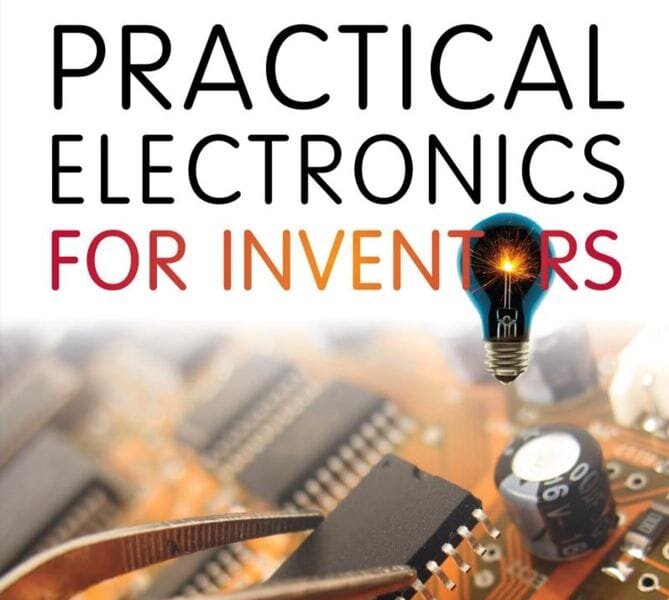![Practical Electronics for Inventors [Source: Amazon]](https://fabbaloo.com/wp-content/uploads/2020/05/image-asset_img_5eb08ddbcb858.jpg) Practical Electronics for Inventors [Source: Amazon]
Practical Electronics for Inventors [Source: Amazon]
This week’s selection is “Practical Electronics for Inventors” by Paul Scherz and Simon Monk.
Electronics are quite frequently found in build projects using 3D printed parts. In a sense, electronics can make a 3D printed assembly “come to life” by providing some sort of active function, be it motion, sensing or some other feature.
While many of our readers are familiar with 3D printing aspects, electronics can be an entirely new field for some. The good news is that electronics is a well-understood field that has plenty of physical resources, as well as considerable learning material.
This book is one of them.
In fact, it seems to be one of the more comprehensive tomes on the topic of electronics that I’ve seen. The book is almost 1,000 pages in length and seems to cover virtually everything a 3D print project designer might want to consider.
It begins with a detailed explanation of electrical theory, including electrical current, voltage, amperage, resistance, conductivity (with a microscopic view of what’s actually going on), heat management, grounding, wire gauges and much more.
The introductory section alone is over 110 pages in length.
Having a good understanding of the theory, the book then moves on to the concept of electronics components, discussing many different types that could be considered by inventors. Relays, switches, batteries, capacitors, insulators, transformers, fuses and other items are discussed in some detail.
One hundred pages are dedicate to the topic of semi-conductors, where such things as rectifiers, transistors, and diodes are reviewed.
Optoelectronics are covered, ensuring the reader knows all about photoresists, LEDs, solar cells and other optical components.
Almost thirty types of sensors are discussed. This section in particular will be of interest to Fabbaloo readers, as physical sensors are very frequently used in many projects. Certainly the sensors you need will be discussed in this book.
I’m impressed that the book dedicates an entire chapter to the topic of “Hands On”. In this section the authors explore the tools one needs to build functioning electronics, including oscilloscopes, multimeters, and other lab gear. There is even a section of electrical safety, which of course is mandatory reading.
The remaining third of the book is dedicated to reviewing a series of more complex electronic components, including:
-
Amplifiers
-
Filters
-
Oscillators and timers
-
Power supplies
-
Digital electronics
-
Microcontrollers
-
Programmable logic
-
Motors
-
Audible electronics
-
Modular electronics
-
Power distribution
I’m blown away by the incredibly comprehensive view this book provides on electronics. Even if you are well-versed in electronics design, there is likely a section or two that you would find useful in this book.
For beginners, however, it seems ideal, as it takes the reader from absolute zero knowledge all the way to a deep understanding of electronics concepts.
Via Amazon

